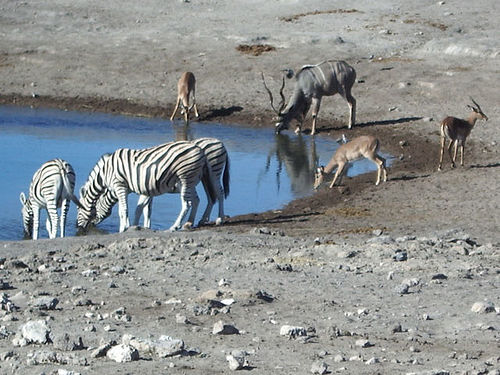| << Chapter < Page | Chapter >> Page > |
Author: Rui Zheng
One of the most widely found forms of group behavior is social grouping (Conradt, 1998); animals of social species often divide themselves into groups of specific size or sex. Thus it's not surprising when sharks and other elasmobranches were observed to practice size segregation and social segregation . A common misconception is that sharks are solitary animals (Conradt, 1998); after evolving for the past 350-400 million years, alongside the 24,000 different species of bony fish and 900 different species of cartilaginous fish, sharks have not only evolved heightened predatory instincts towards scavenging fish and other invertebrates, they have also developed relatively large brains with complex structures (Compagno, 1984 and Long&Jones, 1996 as cited in Sims, 2003) as well more efficient social groupings.
This chapter will cover the different reasons why size and social segregation occur in different shark species. It will examine the limitations of the two suggested reasons for why size-specific groups are naturally selected for (increased hunting efficiency and increased protection) and the five hypotheses for social segregation: predation-risk (reproductive strategy) hypothesis, forage selection (sexual dimorphism-body-size) hypothesis, activity budget (body-size dimorphism) hypothesis, thermal niche-fecundity hypothesis, and social factors (social preference and social avoidance) hypothesis (Guttridge et al. 2009)(Wearmouth&Sims, 2008).
Grouping is a common behavior observed in many species of animals (Alexander, 1974). Groups can consist of unrelated individuals, uniformly related individuals that aren't siblings, close relatives, siblings, and genetically identical individuals. Depending on the relationship between the individuals that form the groups, the nature and significance of the groups differ; however all groups share one main goal: increasing the fitness of the participating members despite intrinsic interest conflicts. Overall, the benefits of grouping behaviors increase the fitness of the participating organism in spite of universal detriments. While increased competition for shared resources, increased transmission of diseases and parasites, and more conspicuous to predators may lower overall fitness, lowered chances of being predated due to either group defense or larger numbers and increased efficiency at securing resources, such as food and territory, increase participants’ overall fitness (Alexander, 1974).
There are two main subcategories of grouping behavior: aggregations and social groups (Alexander, 1974). The main difference lies in the reason for gathering. Aggregations of animals form when organisms gather due to a specific resource within a specific area. The members of these groups gain no fitness from cooperating from each other. Meanwhile, social groups form because the individuals gain from the actions and general presence of other members (Alexander, 1974).


Image on the left from http://www.flickr.com/photos/98334721@N00/25901056.
Image on the right from http://www.flickr.com/photos/aggleton/2117753340/.

Notification Switch
Would you like to follow the 'Mockingbird tales: readings in animal behavior' conversation and receive update notifications?